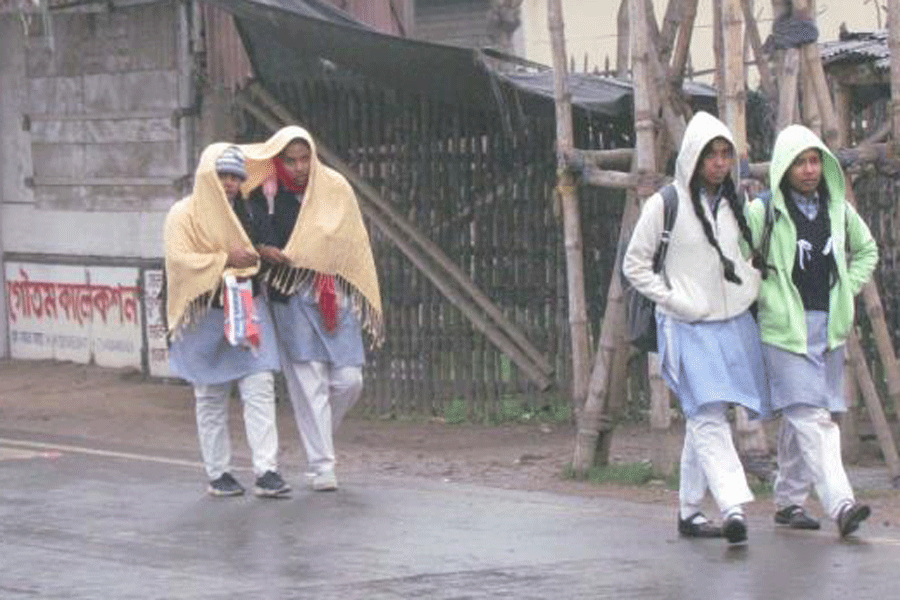The state capital and several south Bengal districts spent an unusual January Thursday as cloudy sky and intermittent rain dragged the day temperature down so much that there was hardly any difference between the maximum and minimum temperatures.
Thursday was dark, damp and dreary for most parts. Attendance dipped at schools. Small bonfires were lit in many street corners even in the afternoon.
According to Met officials, at 16.3 degrees Celsius, the minimum temperature was two notches above normal. But the maximum temperature plunged to 19.2 degrees, a whopping seven notches below normal. The maximum or daytime temperature dipping below 20 degrees in January is not common, a Met official added.
The low day temperature was the main reason for the chill. The minimum temperature is recorded in the early hours of the day, usually just before sunrise and its effect lingers on for a while. But the effect of the maximum temperature — which is recorded in the afternoon, usually when the sun is directly overhead — is felt for most of the day.
The average maximum temperature for January in Calcutta — based on Met readings compiled over the past three decades — is 25.5 degrees Celsius. The average minimum is 14.3 degrees.
"The difference between them is usually 11 degrees. On Thursday, the difference was reduced to three degrees. For a better part of the day, the temperature was around 17-18 degrees," said Ganesh Kumar Das, the director of the India Meteorological Department in Alipore.
Among the districts, Malda's Ratua recorded the lowest minimum temperature at 9.2 degrees Celsius, followed by Murshidabad's Behrampore at 10 degrees Celsius. Sriniketan in Birbhum received 30mm of rain, the highest in the state on Thursday.
Das explained: “A western disturbance has led to the formation of a cyclonic circulation over east Uttar Pradesh and adjoining areas. There is a high-pressure zone over the Bay of Bengal. Easterly winds are travelling from the Bay towards the circulation, leading to the formation of rain-bearing clouds over Jharkhand.”
The clouds moving towards the Bay of Bengal are passing over several districts of south Bengal, including Calcutta. The increased moisture in the atmosphere has, however, stalled the flow of northwesterly winds from Kashmir, the usual agents of chill. But their absence was hardly felt on Thursday. A Met official said that the chill was unlikely to go anytime soon, even without the northwesterly winds.
"The sky is likely to remain partially cloudy on Friday. The maximum temperature will go up and the minimum will go down, both marginally. Saturday is likely to see a clearer sky. But Sunday and Monday are again likely to be overcast because of the dominance of easterly winds. Some rain is likely in districts. Rain is not ruled out in Calcutta, either," said Das.
"Overcast conditions will again drag the day temperature down. When the western disturbance weakens, northwesterly winds are likely to make a comeback," he said.
The dense fog cover, coupled with the drizzle, blurred visibility and disrupted traffic, delaying train services in both Sealdah and Howrah divisions.
Farmers are worried. "Drizzle and cloudy chill damaged standing flowers like marigolds and chrysanthemums. The loss will multiply if this weather persists," rued a florist in East Midnapore.
Arup Chattopadhyay, professor and head of the department of vegetable science at the Bidhan Chandra Krishi Viswavidyalaya, said: "If such weather conditions continue, there is a strong possibility of late blight in potatoes and tomatoes." He alerted farmers to this risk.
Additional reporting by Subhasish Chaudhuri










